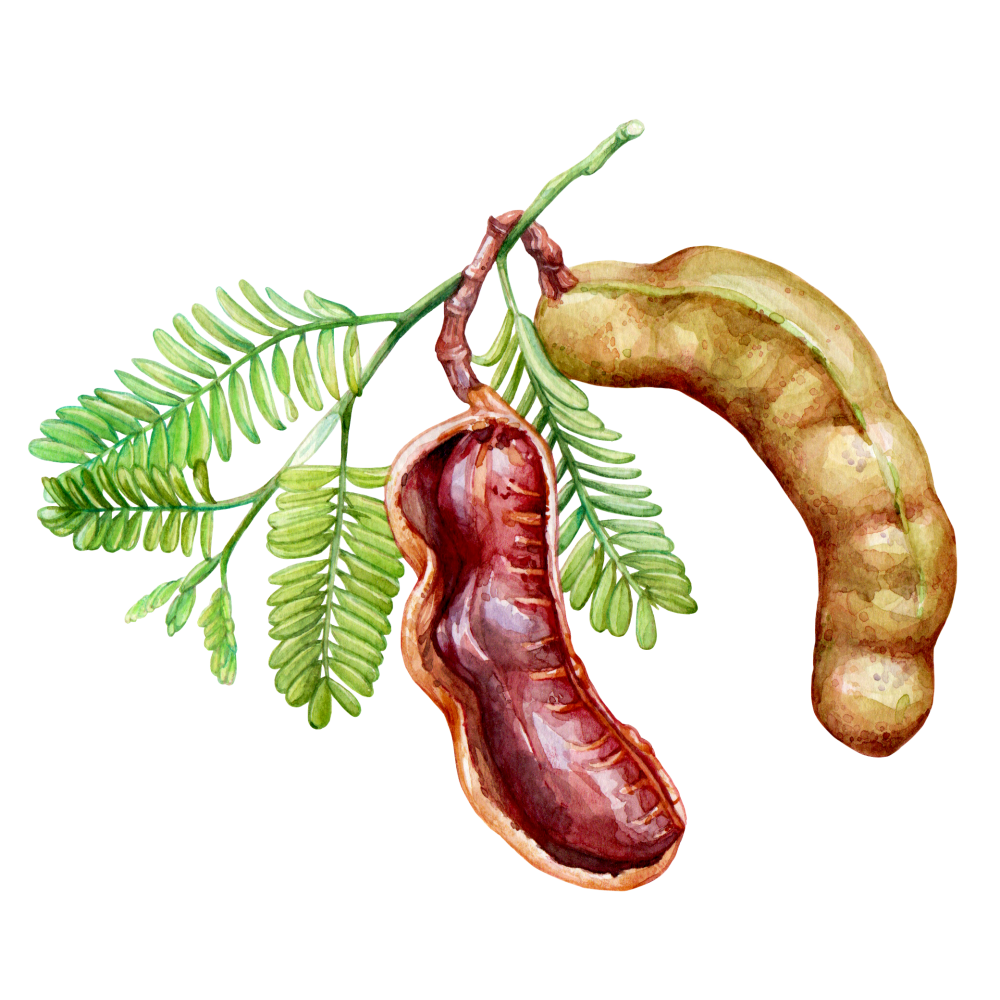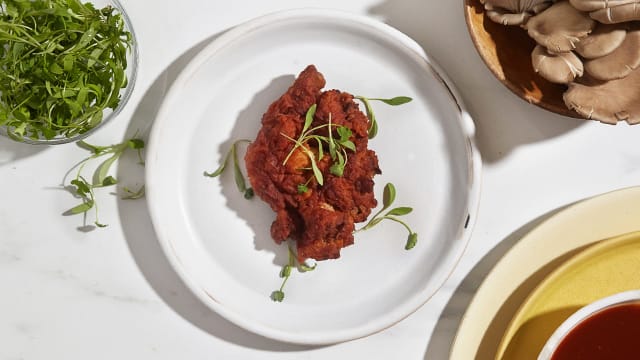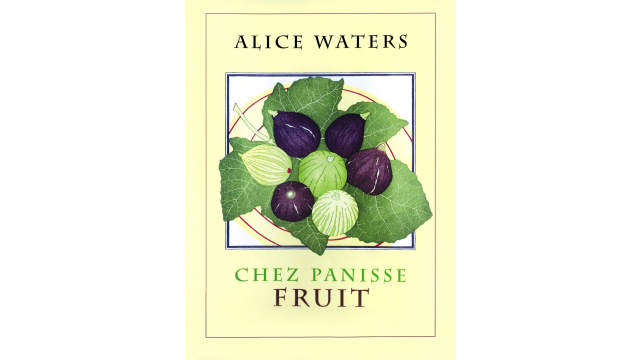Tamarind

Latin name: Tamarindus indica
Uses: fruit (pulp), vegetable
What is tamarind?
Tamarind is pod-shaped fruit of a tree in the pea family. The fruit, leaves, wood, and the seeds’ oil and powder are all used for different purposes (only the fruit and leaves are edible) — the tamarind is an all-around boon of a tree. In the regions where it grows, tamarind is critical for not just bringing the proper sourness to dishes, but for balancing and sharpening the flavors of other ingredients as well. It also makes a mean margarita.
Why is tamarind healthy?
Tamarind is high in beta-carotene, vitamins B1 and B3, magnesium, phosphorous, and iron. It’s also a good source of fiber and contains every essential amino acid except tryptophan, and has relatively high levels of calcium for a plant.
What does tamarind taste like?
The pulp inside the tamarind pod (the part most used) is tart-sweet, almost like a tangy raisin purée. It’s used to impart a sour bite to lots of soups and sauces (it’s even an ingredient in Worcestershire sauce), adding a depth and earthiness that citrus juice or vinegar lack.
How do I use tamarind?
Tamarind is a pantry staple in Indian, Indonesian, Thai, and Filipino kitchens, so if you cook these cuisines often you’ll want to keep tamarind around. For most applications, you mix it with palm sugar syrup and fresh lime juice, and then add to a) bourbon to make the best whiskey sours (or tequila, for the aforementioned margaritas); b) pad thai sauce for that serious Thai flavor punch; or c) ginger and cayenne pepper for tamarind chutney.
What does tamarind pair well with?
It’s delicious with garlic, soy sauce, and shredded coconut in salad dressings or to glaze your favorite protein, and a necessity for spicy Indonesian nasi lemak.
Where does tamarind grow?
The tamarind tree is native to the African tropics, but today it’s grown throughout the tropical regions of South and Southeast Asia, the Caribbean, Australia, and the Americas. It’s drought-resistant and not frost-hardy, but you can totally plant the seeds that you excavate out of the pulp — give it lots of sun, then bring it indoors for the winter and keep it as a houseplant.
How to buy tamarind:
You can usually find tamarind pulp in brick form at Asian grocery stores, but sometimes you can find the whole pods, which you then peel to remove the pulp. Soak the pulp in hot water until it’s soft, then press it through a sieve to strain out the seeds and fibers. You can also buy tamarind concentrate in tubs, but the bricked pulp has superior flavor.
Fun tamarind fact:
Tamarind fruits are used to polish brass shrine statues and other metal utensils in Asian Buddhist temples. The mild tartaric acid helps remove oxidation, while the fibrous pulp gently scours off sediment.



